Share this
Hold-Down Bars, Brackets, & Retention Bands: What Are They?
by Brett Daniel on Nov 20, 2020 4:22:30 PM
Photo: A hold-down bar and one hold-down bracket
Every worthwhile rugged computing solution has its hardware protections. From FIPS 140-2 SEDs to TPM 2.0 cryptoprocessors, MIL-STD-810 shock and vibe certifications, conformal coatings, sealed chassis, and fanless configurations, a rugged server or workstation usually has one or more of these protections, each of which adds an additional, uniquely important layer of hardware resilience to the system.
These technologies, processes, and designs are some of the more well-known throughout the rugged computing industry and are quite commonplace, but there are three simple hardware protections that are just as commonplace but neither frequently discussed nor recognized for their immense utility: hold-down bars, hold-down brackets, and retention bands.
You can find hold-down bars, brackets, and retention bands in the chassis of many rugged servers and workstations, particularly those operating in high-vibration, high-shock environments. These environments include battlefield-deployed transit cases, aircraft, Navy ships, transport trucks, military ground vehicles, and a host of industrial environments.
Although these simple little hardware protections may seem futile or ineffective due to their size, they’re actually quite instrumental in ensuring that some of your computing solution’s most critical components are safe and secure.
In this blog post, we’ll talk about hold-down bars, brackets, and retention bands, what they are, and why they’re necessary, as well as provide some real-world examples of each. At the end, we’ll discuss whether you should consider asking your rugged computer manufacturer about installing them in your computing solution.
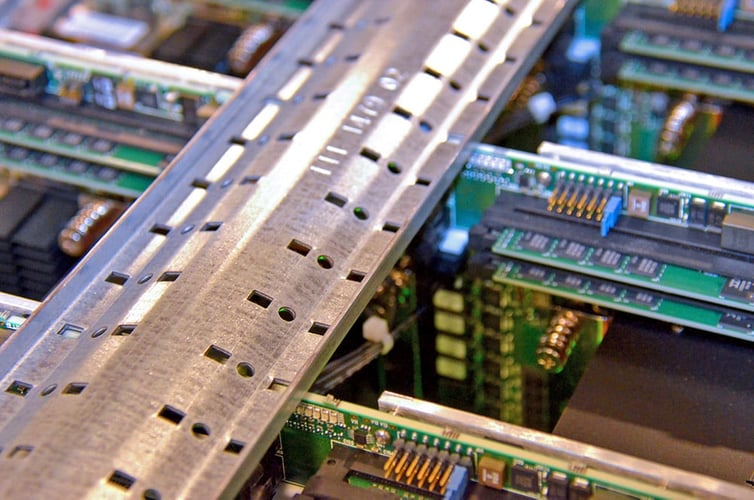
Photo: A hold-down bar without hold-down brackets
What is a hold-down bar?
A hold-down bar is a thick, rectangular piece of metal horizontally fixed across the top of a server, workstation, or PCIe backplane expansion chassis. The purpose of a hold-down bar is to tightly secure the PCIe expansion cards installed on the system’s motherboard or backplane. It does so via adjustable brackets that extend downward and apply slight pressure.
The bar is concealed by the chassis lid, so you’d probably never know it was in your system unless you were inspecting it for repairs or replacements. The bar can be easily removed, as well as modified with additional brackets using the bar’s series of outer holes on each side. You just screw in a bracket, adjust it based on your PCIe card’s height, lower it onto the card, and you’re done.
Understanding how the hold-down bar works and why it’s there is essential to ensuring the continued physical protection of your system’s expansion cards.
Here at Trenton, we install top-frame hold-down bars, like the one pictured above, in our 1U, 2U, 4U, and 5U servers and workstations. In systems with less height, such as our 2U rugged servers, the bar is installed in the chassis itself instead of across its top, allowing the brackets to push against the cards horizontally. This is a more size-conscious solution for smaller systems in general.
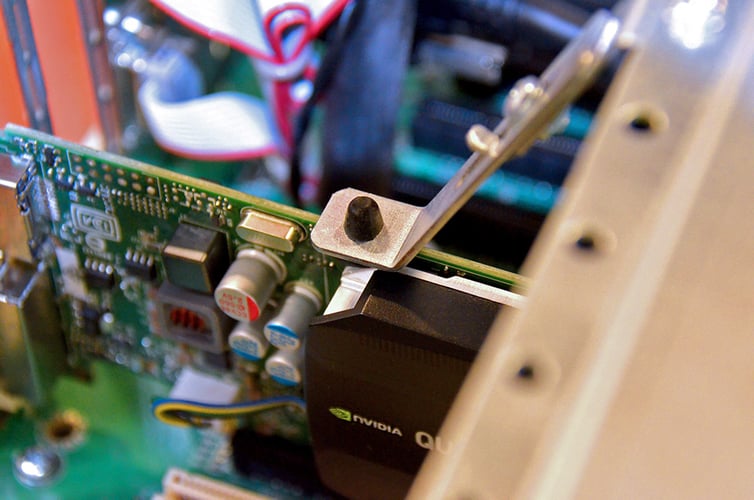
Photo: A hold-down bracket pressed against an NVIDIA Quadro GPU
What is a hold-down bracket?
A hold-down bracket is a rubber-tipped piece of metal – about the size of your index finger – that screws into a hole on the hold-down bar and applies slight pressure to your system’s PCIe cards to keep them in place. This includes your system’s GPUs, USB option cards – any PCIe expansion card you might have. Simply put, the brackets are a source of resistance that push against your PCIe cards to secure them, no different than when you hold down the “Backspace” key on your computer’s keyboard.
We’ve been using the bars and brackets since we started doing systems 12 years ago. They put pressure on the cards and keep them from wiggling around and popping out, and the brackets are adjustable to fit any kind of card.
Steve Looney, Systems Engineering Supervisor
Either side of a given hold-down bar will typically be lined with numerous holes into which hold-down brackets can be inserted. Since PCIe cards have no standard height, the brackets can be adjusted to touch the card. Hold-down brackets are a great addition to your system if you’re dealing with a lot of PCIe cards of varying heights that may become dislodged during transport or operation.
Hold-down brackets are most often installed in your system prior to shipment. If the customer is in possession of the expansion cards or has a preference to install them himself or herself, a manufacturer may install the bar in the system and send a package of brackets along with it. The same applies for the retention bands.
Like the hold-down bar itself, hold-down brackets are easily removed or replaced. You just simply unscrew them. And thanks to their rubber tips, they won’t cause any damage to or performance issues with your PCIe cards. The brackets are there to do one thing: secure your expansion cards.
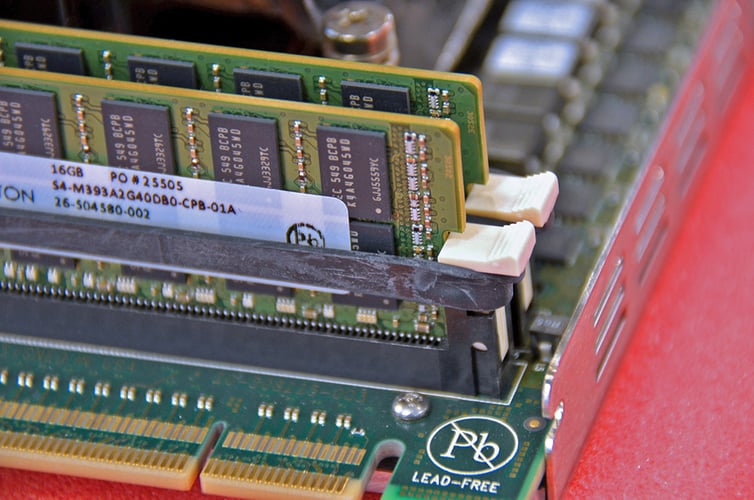
Photo: A retention band circumscribing the ejector tabs of two DIMMs
What is a retention band?
A retention band, also known as a DIMM tie-down or simply “tie-down,” is an industrial-grade rubber band circumscribing the ejector tabs that secure a system’s DIMMs. Like the hold-down bar, retention bands secure important system components – in this case, the modules that provide your system with RAM - and prevent your DIMMS from being dislodged or damaged in high-vibration, high-shock environments.
There’s not much to retention bands. They’re just highly elastic bands, but they’re thicker and tougher than the rubber bands you buy at the drugstore or supermarket. In high-vibration, high-shock environments, the ejector tabs keeping the DIMMs in place may become undone, which could cause the DIMMs to flip out of place and become damaged. Retention bands help prevent this from happening by offering a source of constraint to keep the ejector tabs from loosening or unfastening altogether.
At Trenton Systems, we use ethylene propylene diene monomer (EPDM) rubber, a high-density, long-lasting synthetic rubber known for its low electrical conductivity, abrasion resistance, resistance to weathering, and stability in both high and low temperatures. It is used often in the automotive and construction industries and won’t interfere with the DIMMs’ circuits or pins.
Many manufacturers use zip ties to secure the DIMMs, but these are ineffective because they tend to slide down the ejector tabs easily when the system is exposed to vibration and shock. As a result, the DIMMs are no more secure than if they weren't protected with either bands or zip ties. The bottom line: industrial-grade retention bands are the right choice.
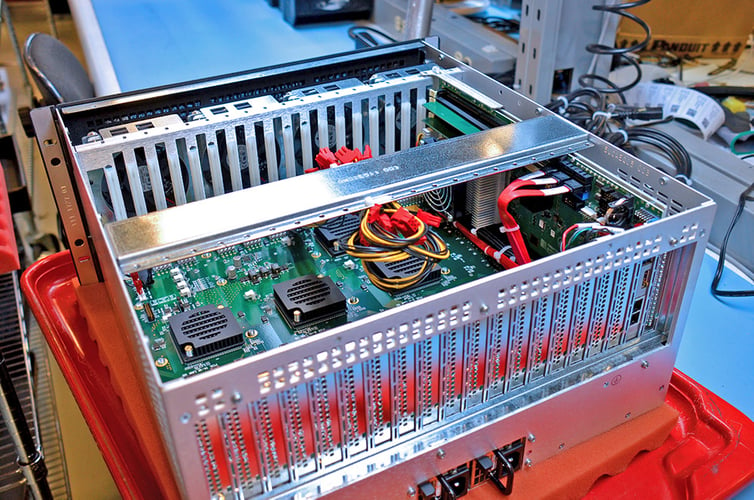
Photo: A 5U rugged workstation with a hold-down bar affixed just above its BPG8032 PCIe backplane and TKL8255 processor board
What are some examples of hold-down bars, brackets, and retention bands in use today?
Hold-down bars, brackets, and retention bands are used in a variety of programs and applications operating in high-vibe, high-shock environments.
One example of a hold-down bar in use today is the bar inside a mobile test and measurement center’s PCIe expansion system. This center is transported onto tarmacs to test aircraft, can be situated on the aircraft itself for testing, and is also used for missile testing as well. Naturally, these environments experience a lot of vibration during takeoff, launch, and flight, but thankfully, the hold-down bar and its brackets prevent the system’s expansion cards from being dislodged and damaged during all three.
One example of retention bands in use today are the bands securing the 12 DIMMs in a 4U rugged server that’s undergoing simple shipping and handling. Indeed, the mere act of transporting and unloading rugged servers and workstations in and from trucks, aircraft, and ships is often coupled with the risk of intense vibrations and shock. Having the 4U server’s DIMMs secured by industrial-grade rubber keeps the DIMMs in place and prevents damage.
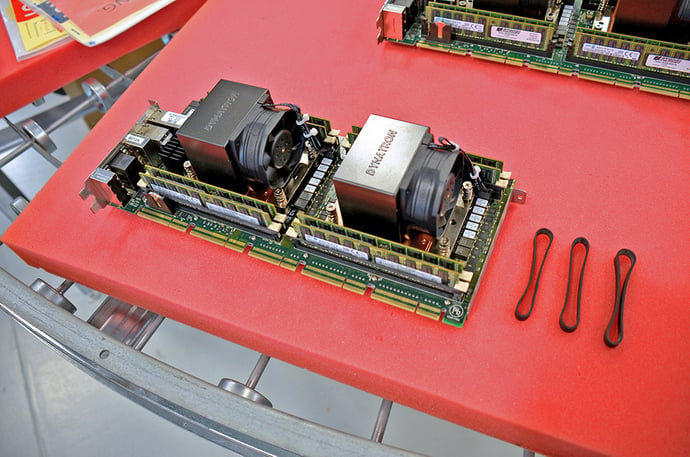
Photo: A dual-CPU processor board with banded DIMMs next to three retention bands
How do I know if I need hold-down bars, retention bands, or brackets?
If your system is headed to a high-vibe, high-shock environment, you'll need hold-down bars, brackets, and retention bands, so check with your manufacturer to see if your system has them. Also, ask the manufacturer about additional hold-down brackets in case you need to add an option card to a PCIe slot later.
The bars, brackets, and bands help immensely with shipping, as well as complementing shock and vibration testing standards like MIL-STD-810 and DO-160. They are very effective and easy to remove in case you need to access your cards, DIMMs, and other system components.
Steve Looney, Systems Engineering Supervisor
At Trenton, we include hold-down bars and brackets in our 1U, 2U, 4U, and 5U systems, so you generally don’t have to worry about not receiving them. It’s always best practice, though, to double-check and make sure that your system has them equipped, no matter whom you're doing business with. The proper functionality of your option cards and memory depends on it.
The retention bands are included in all Trenton Systems servers, workstations, and PCIe expansion chassis, so your DIMMs will always be secure.
Hold-down bars, brackets, and retention bands are essential in protecting your precious expansion cards and DIMMs in high-vibe, high-shock environments. We'd be happy to assist you with designing a computing solution that incorporates each.
Share this
- High-performance computers (42)
- Military computers (38)
- Rugged computers (32)
- Cybersecurity (25)
- Industrial computers (25)
- Military servers (24)
- MIL-SPEC (20)
- Rugged servers (19)
- Press Release (17)
- Industrial servers (16)
- MIL-STD-810 (16)
- 5G Technology (14)
- Intel (13)
- Rack mount servers (12)
- processing (12)
- Computer hardware (11)
- Edge computing (11)
- Rugged workstations (11)
- Made in USA (10)
- Partnerships (9)
- Rugged computing (9)
- Sales, Marketing, and Business Development (9)
- Trenton Systems (9)
- networking (9)
- Peripheral Component Interconnect Express (PCIe) (7)
- Encryption (6)
- Federal Information Processing Standards (FIPS) (6)
- GPUs (6)
- IPU (6)
- Joint All-Domain Command and Control (JADC2) (6)
- Server motherboards (6)
- artificial intelligence (6)
- Computer stress tests (5)
- Cross domain solutions (5)
- Mission-critical servers (5)
- Rugged mini PCs (5)
- AI (4)
- BIOS (4)
- CPU (4)
- Defense (4)
- Military primes (4)
- Mission-critical systems (4)
- Platform Firmware Resilience (PFR) (4)
- Rugged blade servers (4)
- containerization (4)
- data protection (4)
- virtualization (4)
- Counterfeit electronic parts (3)
- DO-160 (3)
- Edge servers (3)
- Firmware (3)
- HPC (3)
- Just a Bunch of Disks (JBOD) (3)
- Leadership (3)
- Navy (3)
- O-RAN (3)
- RAID (3)
- RAM (3)
- Revision control (3)
- Ruggedization (3)
- SATCOM (3)
- Storage servers (3)
- Supply chain (3)
- Tactical Advanced Computer (TAC) (3)
- Wide-temp computers (3)
- computers made in the USA (3)
- data transfer (3)
- deep learning (3)
- embedded computers (3)
- embedded systems (3)
- firmware security (3)
- machine learning (3)
- Automatic test equipment (ATE) (2)
- C6ISR (2)
- COTS (2)
- COVID-19 (2)
- CPUs (2)
- Compliance (2)
- Compute Express Link (CXL) (2)
- Computer networking (2)
- Controlled Unclassified Information (CUI) (2)
- DDR (2)
- DDR4 (2)
- DPU (2)
- Dual CPU motherboards (2)
- EW (2)
- I/O (2)
- Military standards (2)
- NVIDIA (2)
- NVMe SSDs (2)
- PCIe (2)
- PCIe 4.0 (2)
- PCIe 5.0 (2)
- RAN (2)
- SIGINT (2)
- SWaP-C (2)
- Software Guard Extensions (SGX) (2)
- Submarines (2)
- Supply chain security (2)
- TAA compliance (2)
- airborne (2)
- as9100d (2)
- chassis (2)
- data diode (2)
- end-to-end solution (2)
- hardware security (2)
- hardware virtualization (2)
- integrated combat system (2)
- manufacturing reps (2)
- memory (2)
- mission computers (2)
- private 5G (2)
- protection (2)
- secure by design (2)
- small form factor (2)
- software security (2)
- vRAN (2)
- zero trust (2)
- zero trust architecture (2)
- 3U BAM Server (1)
- 4G (1)
- 4U (1)
- 5G Frequencies (1)
- 5G Frequency Bands (1)
- AI/ML/DL (1)
- Access CDS (1)
- Aegis Combat System (1)
- Armed Forces (1)
- Asymmetric encryption (1)
- C-RAN (1)
- COMINT (1)
- Cloud-based CDS (1)
- Coast Guard (1)
- Compliance testing (1)
- Computer life cycle (1)
- Containers (1)
- D-RAN (1)
- DART (1)
- DDR5 (1)
- DMEA (1)
- Data Center Modular Hardware System (DC-MHS) (1)
- Data Plane Development Kit (DPDK) (1)
- Defense Advanced Research Projects (DARP) (1)
- ELINT (1)
- EMI (1)
- EO/IR (1)
- Electromagnetic Interference (1)
- Electronic Warfare (EW) (1)
- FIPS 140-2 (1)
- FIPS 140-3 (1)
- Field Programmable Gate Array (FPGA) (1)
- Ground Control Stations (GCS) (1)
- Hardware-based CDS (1)
- Hybrid CDS (1)
- IES.5G (1)
- ION Mini PC (1)
- IP Ratings (1)
- IPMI (1)
- Industrial Internet of Things (IIoT) (1)
- Industry news (1)
- Integrated Base Defense (IBD) (1)
- LAN ports (1)
- LTE (1)
- Life cycle management (1)
- Lockheed Martin (1)
- MIL-S-901 (1)
- MIL-STD-167-1 (1)
- MIL-STD-461 (1)
- MIL-STD-464 (1)
- MOSA (1)
- Multi-Access Edge Computing (1)
- NASA (1)
- NIC (1)
- NIC Card (1)
- NVMe (1)
- O-RAN compliant (1)
- Oil and Gas (1)
- Open Compute Project (OCP) (1)
- OpenRAN (1)
- P4 (1)
- PCIe card (1)
- PCIe lane (1)
- PCIe slot (1)
- Precision timestamping (1)
- Product life cycle (1)
- ROM (1)
- Raytheon (1)
- Remotely piloted aircraft (RPA) (1)
- Rugged computing glossary (1)
- SEDs (1)
- SIM Card (1)
- Secure boot (1)
- Sensor Open Systems Architecture (SOSA) (1)
- Small form-factor pluggable (SFP) (1)
- Smart Edge (1)
- Smart NIC (1)
- SmartNIC (1)
- Software-based CDS (1)
- Symmetric encryption (1)
- System hardening (1)
- System hardening best practices (1)
- TME (1)
- Tech Partners (1)
- Total Memory Encryption (TME) (1)
- Transfer CDS (1)
- USB ports (1)
- VMEbus International Trade Association (VITA) (1)
- Vertical Lift Consortium (VLC) (1)
- Virtual machines (1)
- What are embedded systems? (1)
- Wired access backhaul (1)
- Wireless access backhaul (1)
- accredidation (1)
- aerospace (1)
- air gaps (1)
- airborne computers (1)
- asteroid (1)
- authentication (1)
- autonomous (1)
- certification (1)
- cognitive software-defined radios (CDRS) (1)
- command and control (C2) (1)
- communications (1)
- cores (1)
- custom (1)
- customer service (1)
- customer support (1)
- data linking (1)
- data recording (1)
- ethernet (1)
- full disk encryption (1)
- hardware monitoring (1)
- heat sink (1)
- hypervisor (1)
- in-house technical support (1)
- input (1)
- integrated edge solution (1)
- international business (1)
- licensed spectrum (1)
- liquid cooling (1)
- mCOTS (1)
- microelectronics (1)
- missile defense (1)
- mixed criticality (1)
- moving (1)
- multi-factor authentication (1)
- network slicing (1)
- neural networks (1)
- new headquarters (1)
- next generation interceptor (1)
- non-volatile memory (1)
- operating system (1)
- output (1)
- outsourced technical support (1)
- post-boot (1)
- pre-boot (1)
- private networks (1)
- public networks (1)
- radio access network (RAN) (1)
- reconnaissance (1)
- rugged memory (1)
- secure flash (1)
- security (1)
- self-encrypting drives (SEDs) (1)
- sff (1)
- software (1)
- software-defined radios (SDRs) (1)
- speeds and feeds (1)
- standalone (1)
- storage (1)
- systems (1)
- tactical wide area networks (1)
- technical support (1)
- technology (1)
- third-party motherboards (1)
- troposcatter communication (1)
- unlicensed spectrum (1)
- volatile memory (1)
- vpx (1)
- zero trust network (1)
- January 2025 (1)
- November 2024 (1)
- October 2024 (1)
- August 2024 (1)
- July 2024 (1)
- May 2024 (1)
- April 2024 (3)
- February 2024 (1)
- November 2023 (1)
- October 2023 (1)
- July 2023 (1)
- June 2023 (3)
- May 2023 (7)
- April 2023 (5)
- March 2023 (7)
- December 2022 (2)
- November 2022 (6)
- October 2022 (7)
- September 2022 (8)
- August 2022 (3)
- July 2022 (4)
- June 2022 (13)
- May 2022 (10)
- April 2022 (4)
- March 2022 (11)
- February 2022 (4)
- January 2022 (4)
- December 2021 (1)
- November 2021 (4)
- September 2021 (2)
- August 2021 (1)
- July 2021 (2)
- June 2021 (3)
- May 2021 (4)
- April 2021 (3)
- March 2021 (3)
- February 2021 (8)
- January 2021 (4)
- December 2020 (5)
- November 2020 (5)
- October 2020 (4)
- September 2020 (4)
- August 2020 (6)
- July 2020 (9)
- June 2020 (11)
- May 2020 (13)
- April 2020 (8)
- February 2020 (1)
- January 2020 (1)
- October 2019 (1)
- August 2019 (2)
- July 2019 (2)
- March 2019 (1)
- January 2019 (2)
- December 2018 (1)
- November 2018 (2)
- October 2018 (5)
- September 2018 (3)
- July 2018 (1)
- April 2018 (2)
- March 2018 (1)
- February 2018 (9)
- January 2018 (27)
- December 2017 (1)
- November 2017 (2)
- October 2017 (3)
/Trenton%20Systems%20Circular%20Logo-3.png?width=50&height=50&name=Trenton%20Systems%20Circular%20Logo-3.png)
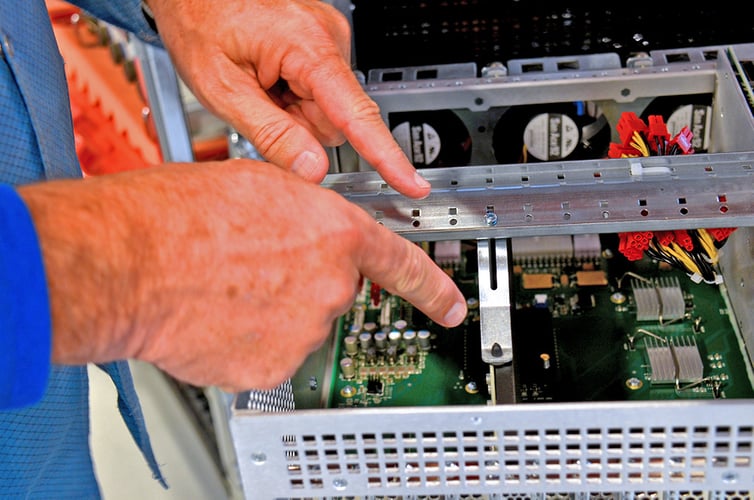

No Comments Yet
Let us know what you think